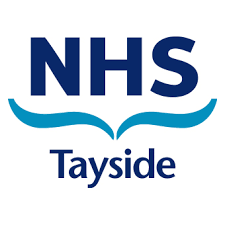Key recommendations

ANTIBIOTIC PROPHYLAXIS IN SURGERY
The aim of surgical prophylaxis is to reduce rates of surgical site and healthcare-associated infections and so reduce surgical morbidity and mortality. There is however growing evidence that aspects of prescribing practice may themselves be associated with health-care associated infections, notably Clostridioides difficile infection (CDI). The Scottish Antimicrobial Prescribing Group (SAPG), along with the Scottish Government, is monitoring surgical prophylaxis in order to reduce the rates of CDI and resistance. SIGN guideline 104 (published in 2008 and updated 2014) has outlined which surgical procedures require prophylactic antibiotics based on a review of the available evidence. Principles of prophylaxis have also been outlined, including timing and duration of antibiotic administration. In conjunction with the surgical specialties within NHS Tayside the Antimicrobial Management Group has undertaken to review local prophylaxis policy and to formulate a uniform policy.
Principles of Antibiotic Prophylaxis Policy
1. Indication for prophylaxis should comply with SIGN 104 guideline i.e. when ‘highly recommended’, ‘recommended’ or ‘considered’ within guideline.
2. Timing of antibiotic(s):
- Optimum timing is intravenous dose given or infusion completed ≤ 60 minutes prior to skin incision
- Sub-optimal if >1 hour prior to skin incision or post-skin incision.
3. Recording of antibiotic prescription in ‘once only’ section of medicine chart to avoid multiple dosing
4. Frequency of administration should be single dose only unless:
- > 1.5 litres intra-operative blood loss - re-dose following fluid replacement (see administration guidance table)
- operation prolonged (see administration guidance table)
- specifically stated in following guidelines.
5. Documentation in medical notes of reason for antibiotic administration beyond single dose or state intention for antibiotic treatment course
6. Choice of agent should:
- Avoid cephalosporins, clindamycin, quinolones and co-amoxiclav wherever possible
- Use narrow spectrum agents when possible to minimise impact on resistance and CDI
- Take into account local resistance patterns
- Provision of alternatives for beta-lactam allergy.
7. De-colonisation therapy/MRSA positive
If a patient is identified as MRSA positive from screening swabs within 3 weeks of anticipated date of elective surgery then a decolonisation program should be started. See HPS Decolonisation Policy. The decolonisation regimen should also be restarted the day they come into hospital for 5 days to reduce the microbial load perioperatively. For surgical prophylaxis for primary operations vancomycin infusion should be added to the regime recommended in the table below (except for breast surgery where it would be used as a replacement). If they have an MRSA infection prior to elective surgery the approach is the same as for any other infection.
8. Complex individual prophylaxis issues should be discussed with Microbiology or Infectious Diseases pre-operatively and recorded in medical notes
9. Compliance with local policy is required and monitored by NHS Tayside. Any deviation from policy must be recorded in the appropriate medical records.